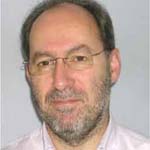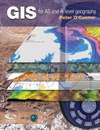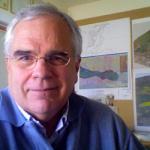
Wednesday, February 4th, 2009
The first line in the Mission Statement for the European Spatial Data Infrastructure Network (ESDIN) project is ‘To become a bridge over troubled geospatial data’. This statement sums up the situation quite well but it needs some elaboration in terms of what the troubles are and how the bridge is being built! 1Spatial is the

Sunday, January 25th, 2009
Students and teachers are constantly searching for new and useful geographical information system (GIS) educational materials. While many GIS concepts are universal and apply around the world, instructional material that contains localised content is in greater demand – people learn more quickly and identify with educational material they are familiar with. GIS for A-level Geography is

Sunday, January 18th, 2009
A GIS-user looks for information that makes it possible for him to solve an actual task. If the GIS-user feels that the information allows correct, safe and fast task-solving, then the producer has gained the user’s favour. Then the good question will be, what the GIS-producer needs to be capable of for the purpose of

Sunday, January 11th, 2009
Some 50,000 islands and thousands of narrow fjords cut into the mountainous countryside along Norway’s jagged coastline. Diesel-fueled ferries have transported people and goods between the islands and across the fjords for decades, but a new fleet of natural gas-powered ferries is now improving mobility without emitting noxious fumes that pollute the marine environment.

Sunday, January 4th, 2009
3D has gradually been making inroads into the planning and design mainstream. It’s not unusual in a public presentation or submittal to see a 3D image rather than an artist’s rendering, and occasionally one actually sees 3D movie “fly arounds”. However, in today’s reality of reduced funding for both staff and software, one has to

Wednesday, December 3rd, 2008
It is easy to cite heart-stopping statistics when discussing the urgent need for worldwide sustainability initiatives. How about 1.1 billion of the world’s 6 billion people not having adequate access to clean drinking water and 2.6 billion not having adequate sanitation services. Or 3 billion people in developing countries living on less than $2 per

Sunday, November 16th, 2008
The International Symposium on Global Navigation Satellite Systems, Space-Based Navigation and Ground-Based Augmentation Systems and Applications was held last week in Berlin. Bringing together representatives from around the world, the event served to provide as a forum for learning about ongoing activity relating to GNSS. Also included were activities and information relating to additional positioning
Sunday, November 9th, 2008
Traditionally, in the building sector, local materials with low energy costs and low environmental impact were used. Nowadays, global materials such as cement, aluminium,concrete and PVC are used, increasing the energy costs and environmental impact. At present, the building sector contributes largely in the global environmental load of human activities: for instance, around 40% of

Monday, November 3rd, 2008
Under sunny skies and with 1600 registered users in attendance, the annual ESRI EMEA User Conference was held in London, UK last week at the Queen Elizabeth Convention Centre under the theme ‘GIS for everyday life’. Richard Waite, president of ESRI (UK) opened the show welcoming guests from across the globe. He said that this